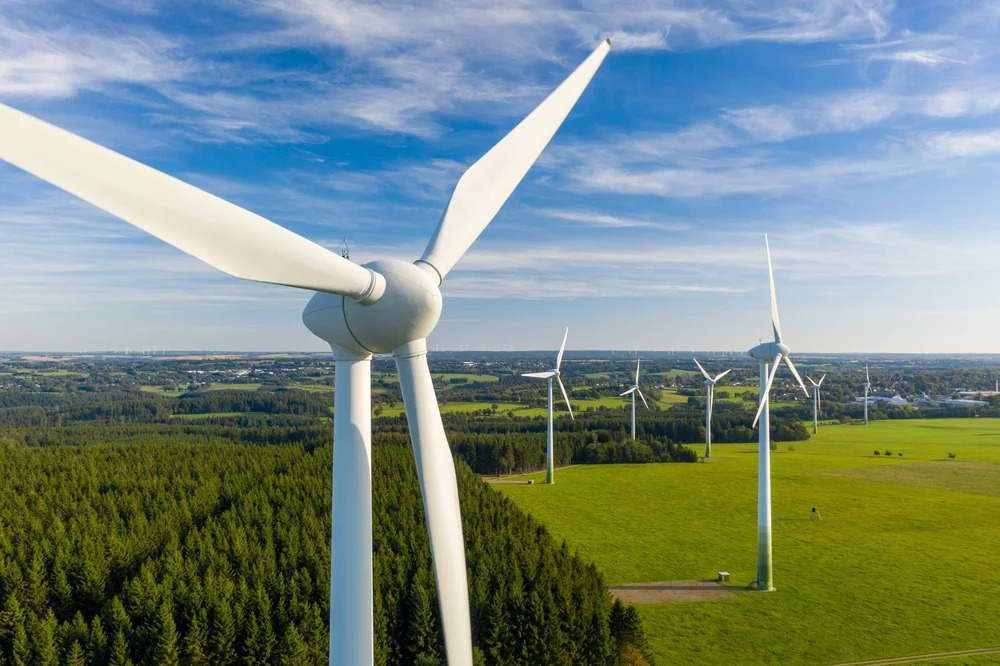Wind energy is rapidly gaining prominence in India as a key contributor toward the country’s renewable energy targets. This growth is driven by the need to incorporate greater diversity into the region’s energy mix. Wind turbines play an integral role in this effort, generating clean and sustainable power. However, one significant challenge associated with wind turbines is their exposure to lightning strikes. Given India’s vast climatic variability and frequent thunderstorms, it becomes essential to implement highly effective lightning protection systems in India to safeguard these turbines.
Companies like Aashapuri Engineering Pvt Ltd are leading the way in designing and delivering advanced lightning and surge protection systems for wind turbines. Their innovative solutions ensure that wind turbines can operate efficiently and safely, even in regions prone to thunderstorms. With a focus on both longevity and performance, Aashapuri Engineering Pvt Ltd is helping to secure India’s wind energy infrastructure, ensuring the country’s renewable energy goals are met without compromising on safety.

Being aware of the Vulnerability of Wind Turbine to Lightning Strike
Wind turbines are located in open areas as they try to capture the maximum amount of air movement. Once again, this height helps capture the wind, but it exposes them to more lightning strikes. There are a million lightning strikes every year in the country, mainly in areas characterized by high potential wind flow, such as coastal states and the Western Ghats, according to the Indian Meteorological Department. Such risks from 3 to 4 million lightning strikes annually make wind farms vulnerable.
It will be a severe lightning strike to a wind turbine because lighting can generate massive electrical surges that can destroy sensitive components such as a generator, control systems, and rotor blades. Such damage may lead to long periods of unavailability, cost-intensive repairs, and loss of generated energy.
The Science Behind Lightning Strikes
To grasp why wind turbines are especially sensitive to lightning, a brief overview of how lightning strikes should be undertaken. Lightning is an electric discharge brought about by static charge accumulation in the atmosphere. When the difference between the ground and the cloud potential becomes large enough, this sets off an immediate release of energy that travels from the cloud down to the ground—or vice versa.
Wind turbines are usually taller over them; they can sometimes serve as natural lightning rods. On striking a turbine, lightning may roam through various channels into the electrical system of a turbine. It also carries very intense heat, causing physical damage to the physical structure of the turbine through melting and burning materials.
Importance of Lightning Protection Systems
A lightning protection system for wind turbines in India is greatly essential in the design of turbines as the structures have to be withstood by forces of nature. One complete lightning protection system involves:
- Air Terminals (Lightning Rods): These are installed at the wind turbine’s top-most points. Lightning rods are put in to catch lightning strokes and divert their electrical energy to the ground with the minimum possible resistance.
- Conductors: The electrical charge from the air terminals to the ground needs to be conveyed by conductors. The size and installation of conductors require proper consideration in terms of sizing so that it can be able to support major electric loads lightning may cause.
- Grounding Systems: Grounding systems provide how electrical energy can safely dissipate into the earth. If a grounding system is properly configured, the electrical surge will not have time to propagate to the sensitive components of the turbine.
- Surge Protection Devices (SPDs): SPDs safeguard the electrical wiring of turbines from direct lightning strikes and also from local surges caused by lightning. Inverters and control systems are some electrical components; if those deteriorate before their scheduled phase due to surges caused by lightning, SPDs can save those electrical components.
Implementing a good lightning protection system is very important not only for the physical infrastructure but also for the energy would be produced with reliability and efficiency. Wind farms, without such protection, face challenges with equipment failure and downtime.
Surge Protection: The Necessitous Companion
A lightning protection system cannot be installed alone; it must be accompanied by surge protection in a design. Even if a wind turbine has good lightning protection, induction of surges in the electric system may appear due to strikes near the turbines. These surges may cause damage to the sensitive electronic components and therefore increase maintenance costs and lower efficiency levels.
SPDs safeguard electronic devices in the turbine. They function on ideas that offset extra voltage from sensitive pieces. Thus they prevent damage. It ensures control systems, inverters, and other components are operational even during unfriendly weather. In the use of surge protection, maintenance plays a very significant role.
Surge protection systems must be maintained properly. Maintenance is monitoring the SPDs, the grounding system, as well as assuring that there is no rusting of deterioration on the air terminals. Thus, this preventive measure reduces the possibility of equipment failure due to electrical surges.
Economic Impact of Lightning Damage
The economic impact of lightning strikes on wind turbines can be tremendous. Direct loss occurs due to ungenerated energy during the downtime after the repair of damaged components. It is estimated that the average repair cost incurred in cases involving damage due to lightning strikes ranges from tens of thousands to millions of rupees.
Moreover, prolonged periods without any activity may result in punitive fines from the energy buyers. Most energy production contracts have a minimum output clause, and failing to achieve this set minimum target would amount to punitive damages. A good lightning protection system in India would avoid these kinds of risks, and the financial inputs that go into the renewable energy plant would be secured.
Best Practices for Lightning Protection System Installation
To ensure safe and efficient installation of lightning protection systems for wind turbines, the following best practices by stakeholders will ensure effectiveness:
- Regular Maintenance and Inspections: The lightning protection system shall be regularly inspected to find any potential trouble in the conductors, grounding systems, or SPDs. Regular maintenance is very essential for compliance with the safety standards but is also important in raising the reliability of the system.
- The installation process of lightning protection systems involves experienced professionals, as it is professionally and technically sensitive. Well-experienced professionals and adherence to regional provisions and industry standards will ensure peace of mind for operators.
- Customized Solutions: Every wind farm is unique, and lightning protection systems should be adjusted according to the site’s condition. Those factors encompass geography locations, turbine height, and local patterns of weather, which should be discussed during design time.
- Training and Awareness: This is an important training aspect that needs to be communicated in training courses for the development of overall safety and reliability in wind turbine operations. Through the training programs, the concerned personnel may gain knowledge concerning identified potential risks and implement those prevention measures accordingly.
- Documentation and compliance: Detailed records of the installation, inspection, and maintenance of lightning protection systems can be helpful in this regard and are very important sources of data for future reviews.
Conclusion
Another reason why an efficient lightning and surge protection system is crucial in India is that the country is still finding ways to expand its potential for wind energy. Even though wind turbines are considered clean and sustainable sources of energy, they are still exposed to the destructive forces of nature. Investing in an effective lightning protection system for wind turbines in India can allow the stakeholders to secure their investments for a long time and to a high degree of reliability.
Aashapuri Engineering Pvt Ltd specializes in comprehensive lightning protection solutions tailored to the unique needs of wind turbine installations. Being dedicated to safety, reliability, and innovation, Aashapuri Engineering is ready to take India’s renewable energy sector by storm, facing all natural challenges. Harnessing the power of wind energy while safeguarding our future investments can be done through the effective implementation of lightning protection systems.
If you wish to enhance the resistance of your wind farm toward lightning and ensure interruption-free energy production, then I would consider it my pleasure to invite you to the services we have at Aashapuri Engineering. Our teams are ready to help you with solutions that are tailored for your needs. In collaboration with all our stakeholders, we will unlock a greener and more sustainable future in the energy landscape of India. So don’t wait another day but rather contact us today to make your investment safe.
